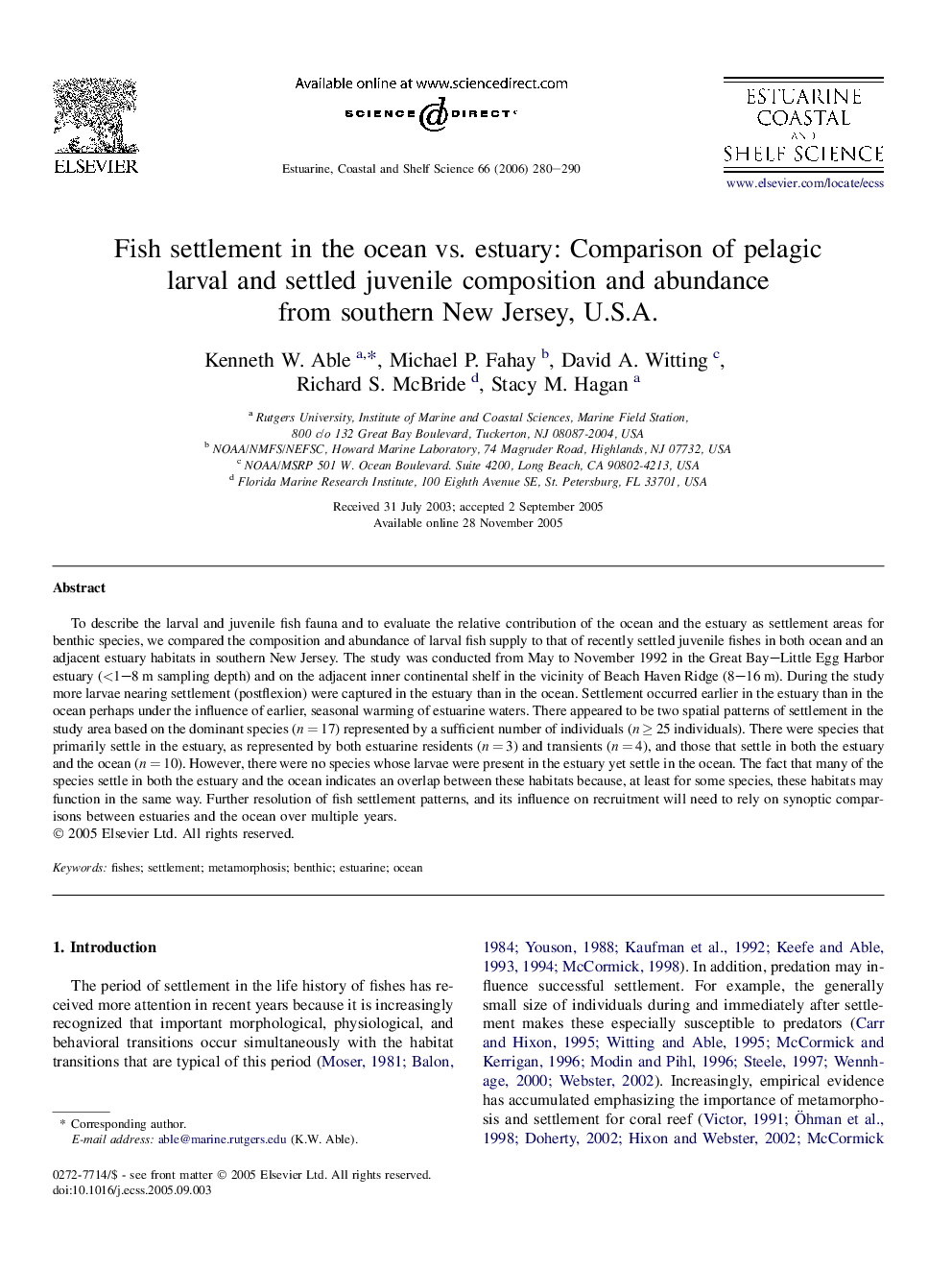| Article ID | Journal | Published Year | Pages | File Type |
|---|---|---|---|---|
| 4542582 | Estuarine, Coastal and Shelf Science | 2006 | 11 Pages |
To describe the larval and juvenile fish fauna and to evaluate the relative contribution of the ocean and the estuary as settlement areas for benthic species, we compared the composition and abundance of larval fish supply to that of recently settled juvenile fishes in both ocean and an adjacent estuary habitats in southern New Jersey. The study was conducted from May to November 1992 in the Great Bay–Little Egg Harbor estuary (<1–8 m sampling depth) and on the adjacent inner continental shelf in the vicinity of Beach Haven Ridge (8–16 m). During the study more larvae nearing settlement (postflexion) were captured in the estuary than in the ocean. Settlement occurred earlier in the estuary than in the ocean perhaps under the influence of earlier, seasonal warming of estuarine waters. There appeared to be two spatial patterns of settlement in the study area based on the dominant species (n = 17) represented by a sufficient number of individuals (n ≥ 25 individuals). There were species that primarily settle in the estuary, as represented by both estuarine residents (n = 3) and transients (n = 4), and those that settle in both the estuary and the ocean (n = 10). However, there were no species whose larvae were present in the estuary yet settle in the ocean. The fact that many of the species settle in both the estuary and the ocean indicates an overlap between these habitats because, at least for some species, these habitats may function in the same way. Further resolution of fish settlement patterns, and its influence on recruitment will need to rely on synoptic comparisons between estuaries and the ocean over multiple years.
